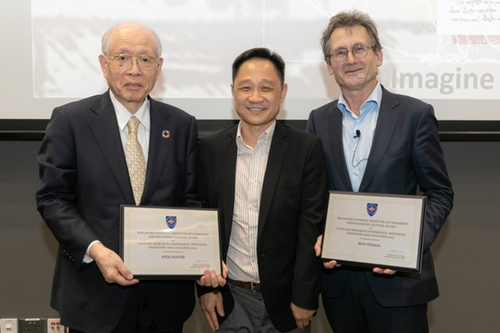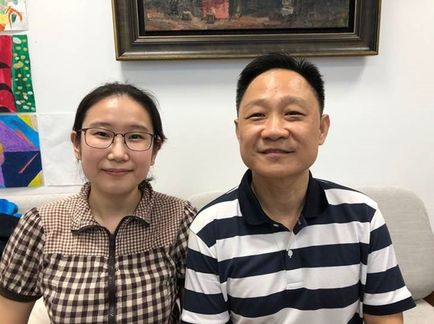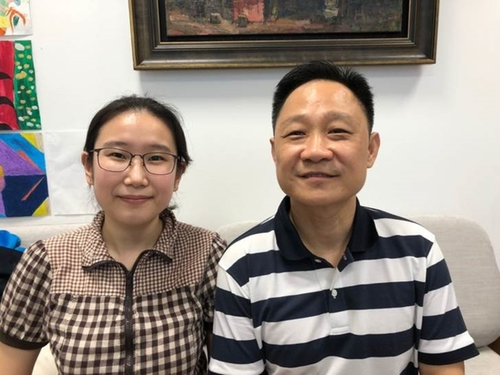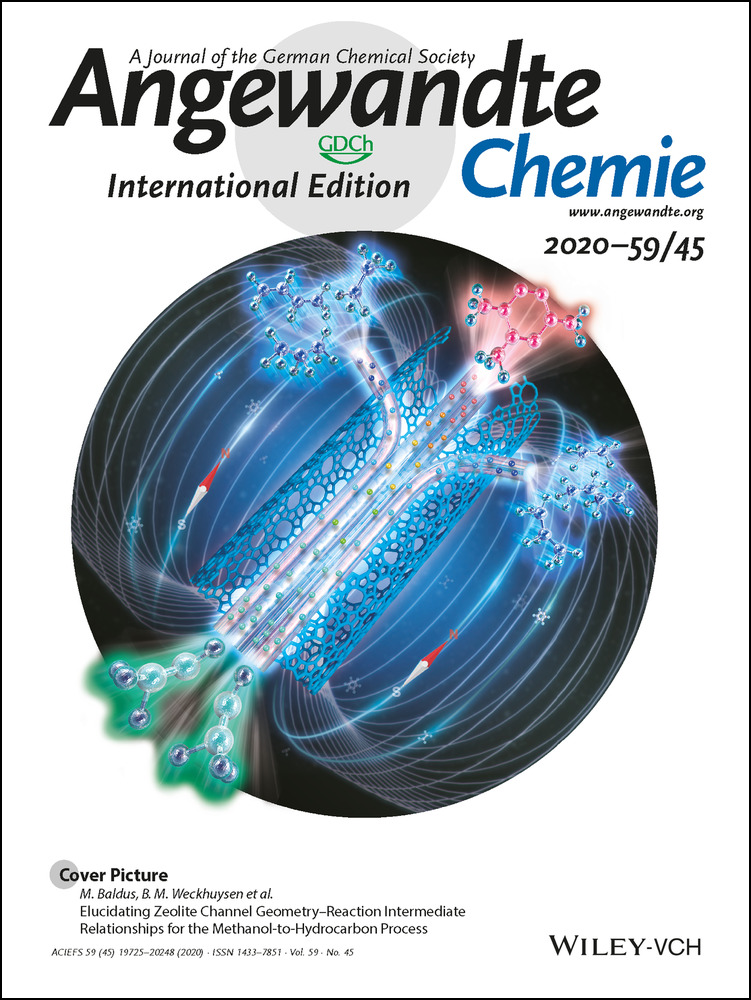Golden Jubilee of Singapore National Institute of Chemistry (1970–2020): Celebrating its Partnership with Wiley-VCH
Graphical Abstract
This year Singapore National Institute of Chemistry (SNIC) is celebrating its golden jubilee (1970–2020). Wiley-VCH has been a steadfast partner accompanying the rapid rise of chemistry research in Singapore. In celebration of this golden jubilee, we highlight 50 significant papers published in Angewandte Chemie by scholars currently based in Singapore, covering the widest possible spectrum of chemistry research.
Introduction
History and Events of Singapore National Institute of Chemistry
The Singapore National Institute of Chemistry (SNIC) was established in March 1970 as a national body for the chemical profession in Singapore. The chemical profession was in earlier years linked to the Royal Institute of Chemistry (RIC) in London through RIC Malaya Section and later RIC Singapore Section. With a growing number of graduates from the then University of Singapore and Nanyang University and with increasing industrial activity requiring the services of qualified chemists, there was a need for a local organization to serve the interests of chemists and to maintain a high standard of professional competence and ethical practice. The Singapore National Institute of Chemistry was founded to meet this need. Fast-forward to today: there are several flagship events that SNIC organizes for the benefit of our community. For example, the Singapore Junior Chemistry Olympiad (SJChO), which we have organized every year since 2010, attracts more than 2500 secondary school students per year. We also organize the Singapore International Chemical Conference (SICC) biennially and SICC-11, chaired by Professors Shunsuke Chiba and Yu Zhao, will be held in December 2021. In 2018, we started the Chemistry National Meeting Singapore (ChnmSG) as an annual gathering to bring everyone in the local community together and showcase the most exciting chemistry conducted in Singapore, particularly for the benefit of students. As local chemistry activities increased, interest groups organize as chapters under SNIC. For example, the Chapter of Singapore Crystallographers (CSC) recently formed under SNIC and is currently led by Professor Tim White. We are also happy to report that SNIC was formally accepted to be an official National Adhering Organization (NAO) at the 50th IUPAC Council meeting that was held in Paris July 11–12, 2019. To find out more about SNIC activities, please visit our website https://snic.org.sg/ and read the comprehensive report by Professor Andy Tzi Sum Hor, immediate past President of SNIC.1
Golden Jubilee Celebration
Singapore National Institute of Chemistry Distinguished Lectures
The Nanyang Research Conference on Synthetic Chemistry and Catalysis (January 15–17, 2020) was jointly organized by the Institute of Advanced Studies (NTU), the School of Physical and Mathematical Sciences (NTU) and SNIC. In conjunction with this conference, Professor Ryoji Noyori and Professor Ben Feringa accepted our invitation to deliver back-to-back Nobel Public Lectures (Figure 1). They also generously agreed to name these public lectures “Singapore National Institute of Chemistry (SNIC) Distinguished Lectures” as a way to commence SNIC′s golden jubilee celebration!

Professor Ryoji Noyori (left), Professor Choon-Hong Tan (middle, SNIC) and Professor Ben Feringa (right) at Nanyang Research Conference on Synthetic Chemistry and Catalysis (January 15–17, 2020).
Partnership with Wiley-VCH
Wiley-VCH has been a steadfast partner accompanying the rapid rise of chemistry research in Singapore. In 2019, U.S. News and World Report published their ranking of the world's best universities: both Nanyang Technological University and National University of Singapore made it to the top 10 in the list for the best universities in the world for chemistry,3 a phenomenal achievement for both institutions.
In commemoration of SNIC′s golden jubilee, we will be working with Chemistry—An Asian Journal on a special issue. The guest editors are Professor Richard Ming Wah Wong (Head of Department, Department of Chemistry, National University of Singapore) and Professor Xing Yi Ling (Head of Division, Division of Chemistry and Biological Chemistry, Nanyang Technological University). SNIC joined the Asian Chemical Editorial Society (ACES) soon after it was founded in 2005.2 ACES publishes several journals including the Chemistry—An Asian Journal, which is a high-impact journal for all aspects of chemistry including interdisciplinary topics. The current editorial team is headed by Dr. Theresa Kückmann and the Editorial Board is headed by Professor Susumu Kitagawa.
Simultaneously, working with Dr. Xin Su, Senior Associate Editor at Angewandte Chemie, we have selected 50 significant papers, covering the widest possible spectrum of chemistry research, published in Angewandte Chemie by scholars currently based in Singapore. Angewandte Chemie published the first paper from Singapore in 1997: Loh4a reported a highly stereoselective synthesis of β-trifluoromethylated homoallylic alcohols in water.4b This was followed by a paper by Ranford and Vittal,5a who demonstrated the topochemical thermal conversion of a three-dimensional network held together by strong hydrogen bonding into a covalent framework by dehydration of coordinated water,5b and a report from Wong on a computational study of Hund's rule using ethenedithione.5c Following their lead, scholars from Singapore universities and research institutes have regularly published with Angewandte Chemie to share results from their research with the world.
Nanotechnology is a research area of rapid development and Singapore-based scholars have contributed much to this endeavour. We have reported novel methods to prepare nanostructures such as nanocrystals,6 nanorods7 and nanoscaffolds.8 We have also studied the unique physiochemical properties of nanoparticles such as aggregation9 and size-dependent luminescence10a (Liu),10b and their potential applications in photothermally controlled drug delivery11 and colorimetric assays.12 Biocompatible magnetic quantum dots were also prepared successfully for live cell imaging.13 Nanoparticle-based plasmonic liquid marbles were used for surface-enhanced Raman spectroscopy (SERS) in multiplex molecular detection14a (Ling).14b Carbon nanostructures have attracted significant attention due to their exciting properties and have proved to be useful in wide-ranging areas such as gene technology,15 biosensing,16 electrocatalysis,17 lithium storage18 and as cathodic materials19a (Lou).19b
Advances in catalysis are essential for progress towards the sustainable development goals. We have produced impactful results in organocatalysis using chiral guanidine derivatives,20 chiral phosphine derivatives21a (Lu),21b N-heterocyclic carbenes22 and 2H-1,3,2-diazaphospholene.23 New reactions have also been developed with catalysts using rhodium–copper bimetallic complexes,24 cobalt complexes25 and iridium complexes.26 Photocatalysis has seen a revival in recent times and we have contributed using eosin Y,27 dye-sensitised titanium dioxide28a (Chen)28b and metal halide perovskites29 as catalysts. BODIPY-based dyes30a with intense near-infrared absorption were also developed (Wu).30b Single atoms of platinum anchored on phosphomolybdic acid (PMA)-modified active carbon have also been shown to be effective for hydrogenation.31
Novel organometallic structures such as a luminescent gold ring,32a a lead(I) dimer32b and double cubane chromium complexes33 have been prepared. In addition, cobalt spinel oxides were discovered to catalyse oxygen evolution.34 Crystalline chalcogenide layers were inserted into polymer chains to form organic–inorganic hybrid composites35a (Zhang).35b We have also reported the development of metal–organic frameworks for carbon dioxide reduction36 and natural gas delivery.37 Functional materials made up of fibrous networks with permanent interlinking,38 Z-shaped pentaleno-acene dimers39 and triblock copolymers/α-cyclodextrin40 were developed. Atom-transfer radical polymerisation on functionalized GaAs single-crystal surface was studied.41 Chemisorption interaction and dimerization of adsorbed furan on silicon surface was also investigated.42
Chemistry can provide a multimodal approach to tackle cancer. Outstanding work in this area includes the development of immuno-chemotherapeutic prodrugs of cisplatin,43 enhanced cancer therapy through photothermic activity44 and image-guided photodynamic therapy.45 A significant number of kinase inhibitors have been approved for the treatment of cancer. A cell-based proteome profiling46a using photoaffinity labelling of cellular kinase targets has been developed by Yao46b and co-workers.
Conclusion
A strong partnership with Wiley-VCH has allowed the tiny Republic of Singapore to share the results of our work rapidly to broad readership around the world. Thus far, 10 Singapore-based scholars have been invited to provide Angewandte author profiles.4a, 5a, 10b, 14b, 19b, 21b, 28b, 30b, 35, 46b We are sure more of us will follow in their footsteps. We are also confident that this fruitful partnership with Wiley-VCH will last another 50 years and that we will be able to showcase the exciting work done by another 50 colleagues soon.
Biographical Information
Professor Choon-Hong Tan (right) received his B.Sc. (Hons) from NUS and PhD from the University of Cambridge. He received postdoctoral training at Harvard University and Harvard Medical School. He began his independent career as Assistant Professor at NUS in 2003. He moved to Nanyang Technological University (NTU) in 2012. He is currently the Chair of School of Physical and Mathematical Sciences and President of Singapore National Institute of Chemistry. Esther C. X. Ang (left) received her Bachelor of Science from NTU in 2019 and she is currently conducting PhD research under the supervision of Professor Tan.






